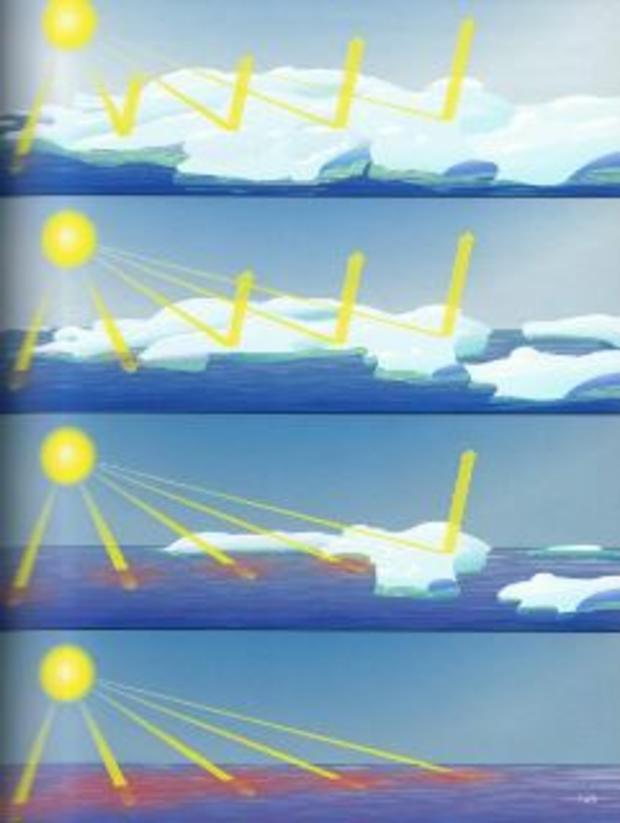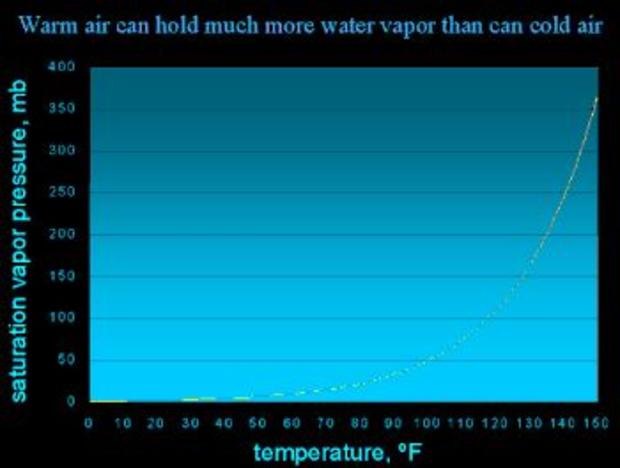As Temperatures Dip, Some Questioning Validity Of Global Warming
PHILADELPHIA (CBS) — An arctic air mass has dominated nearly half of the country for more than a week. Today, the temperature in Philadelphia rose above the freezing mark for the first time in 8 days. Snow fell in Tallahasse, Savannah, and five inches of snow in Charleston, with a powerful Nor'easter on route to impact the Delaware Valley.
The severity and persistence of this cold has some calling into question the validity of global warming. How could it be so cold if the planet is warming? To explain, let's first discuss the difference between weather and climate.
"Weather" is the daily state of the atmosphere with short-term variations of minutes to weeks. "Climate" is the weather of a given location, be it city, country or globe, averaged over a period of time, often multiple decades.
This prolonged polar plunge represents weather and does not bear evidence against planetary warming. It may seem counter-intuitive, and the answer is not simple but it is science.
The Importance of Ice:
The planet's northern-most region is warming at a rate two to three times faster than the Mid-Latitudes (where we live). This warming is largely attributed to the loss of Arctic sea ice extent, which is 75 percent less than levels observed just 30 years ago.
Ice retains a high albedo, or rate of reflectiveness. Sea ice in the Arctic Ocean serves to reflect sunlight, deflecting a proportion of "radiational" warmth back into space.
Not only are these warmth-reducing bergs being depleted, but trading places with the ice are areas of dark, open-ocean. As we know from donning a dark-colored tee on a hot, sunny day, dark colors absorb heat.
Zones in the Arctic which in the past performed heat expulsion, now initiate heat absorption. Oceanic heat absorption is greatest in summer when the sea ice extent is at its seasonal minimum. Come fall and winter, that warmth is then released into the arctic atmosphere.
Now Let's Look to Newton:
Our good friend Isaac Newton in his third Law of Motion declared; 'for every action there is an equal and opposite reaction.' The above-detailed rapid warming of the arctic is yielding changes to jet stream; the fast-moving river of air positioned high in the atmosphere.
In the Northern Hemisphere there exists two of these 'rivers of air'; the polar jet and the sub-tropical jet. During the winter months, the polar jet stream is in charge. It drives storm systems and serves as a boundary between cold, Arctic air from warm air nearer to the Equator. Similar to a river on terra firma, the jet stream flows in waves and at varying speeds.
The speed and waviness of the jet stream is a direct result of the temperature difference between the Arctic region and that of the Mid-Latitudes. The greater the contrast, the faster and more zonal (not wavy) the jet stream will flow. The less the contrast, the slower and more meridional (wavy) the jet stream will flow.
Large dips in the jet stream result when the pattern is in a wavy phase. These large dips are called 'troughs'. A large and deep trough, allows bitter cold air from the Arctic to plunge far south into the U.S. This brutal expansive holiday cold snap is the result of a deep trough.
When the jet stream moves in a wavy fashion it also moves more slowly which can cause the weather pattern to slow or stagnate, thus when the cold moves in, it slowly moves out.
To summarize; a warmer Arctic yields less temperature contrast between said region and the Mid-Latitudes, this in turn causes the jet stream to take on a slower, wavier patter thereby allowing a deep freeze over-take a large portion of the country.
Thus the argument that extreme cold is evidence against global warming…is bunk.
Think Less Snow in a Warmer World? Sno-pe:
Now to tackle the argument that a snow storm discredits climate science. In fact, big snows may become more frequent in a warming world.
Another of the many implications of global warming is increased water vapor or atmospheric moisture. Warmer air holds more moisture than does cold. Warmer average global temperatures thereby yield an increase in moisture for winter storms to utilize to produce snow.
More available atmospheric moisture has potential impacts for not only on winter storms but for hurricanes and heavy precipitation events or thunderstorm-produced rains, the latter of which has increased in frequency in the Delaware Valley.
In Summary:
The term 'global warming' can be a misnomer as some may focus on the 'warming', but the atmospheric and environmental implications are vast and wide-reaching—affecting not only our sensible weather but in a domino fashion impacts; pathogen and parasite populations, wintertime survival rates of insects, animal migration patterns, health of livestock, length of allergy seasons, sewer design efficiency… and so and so on…






